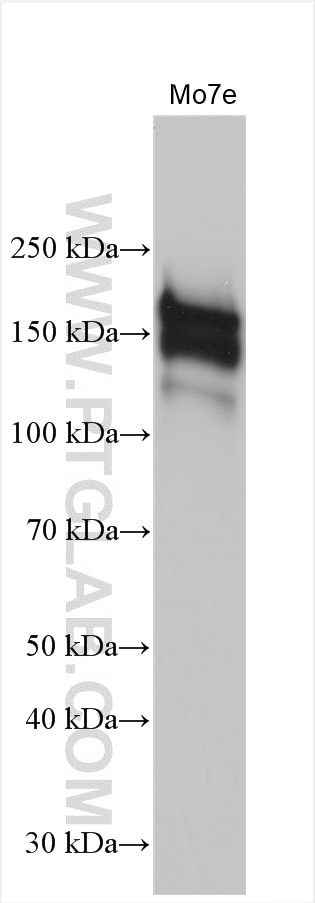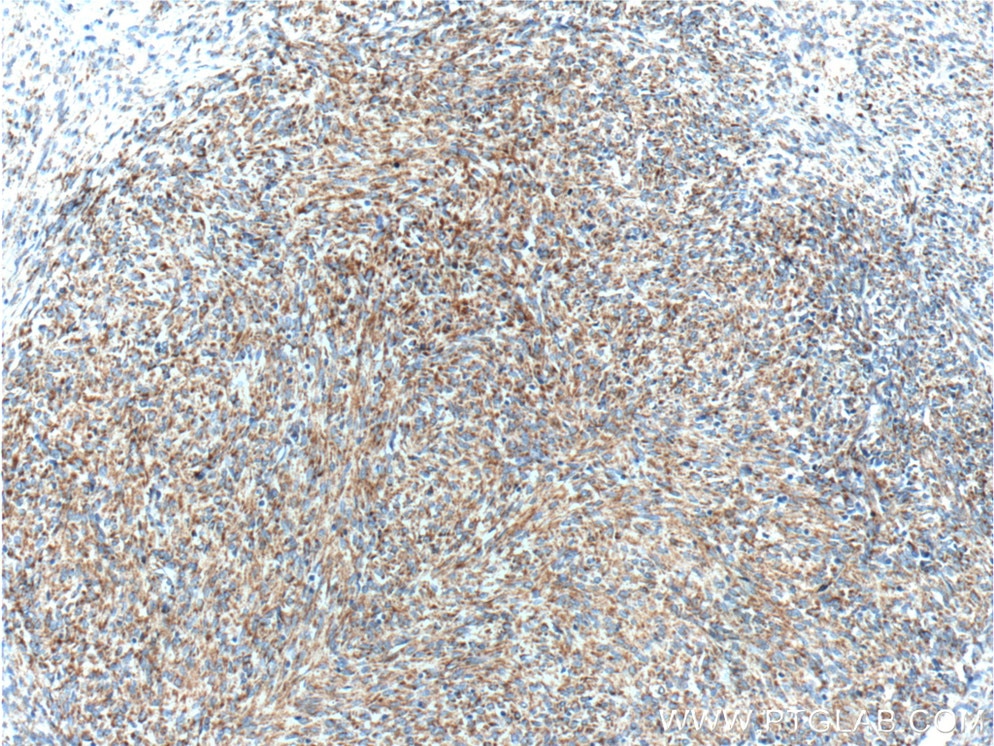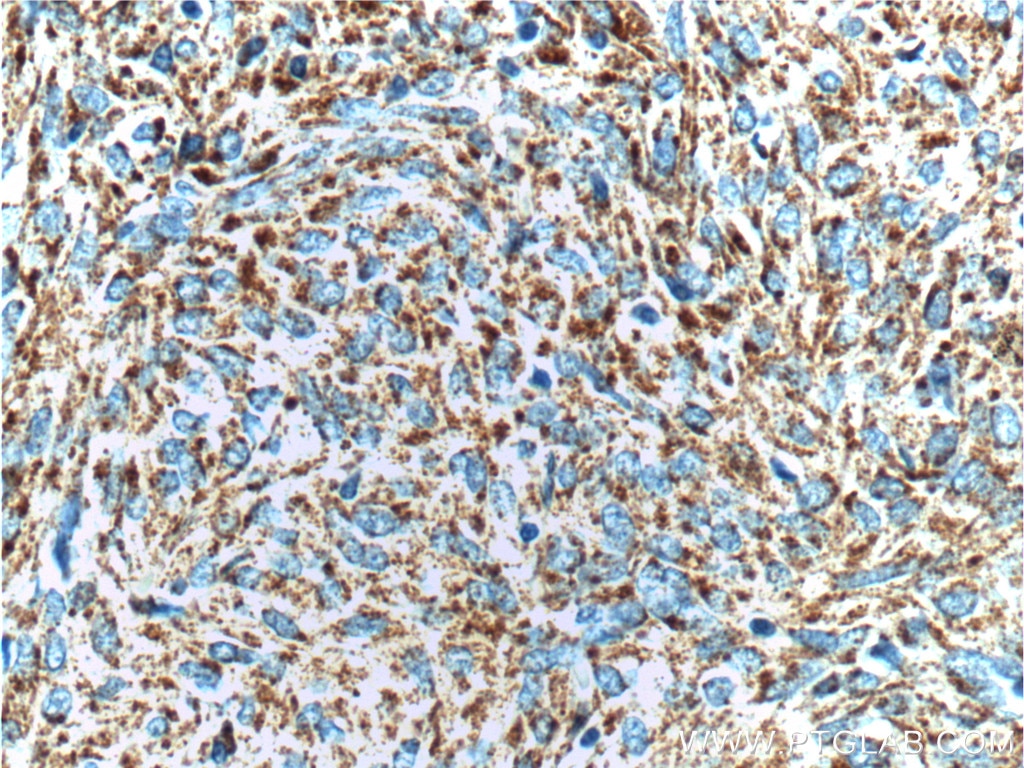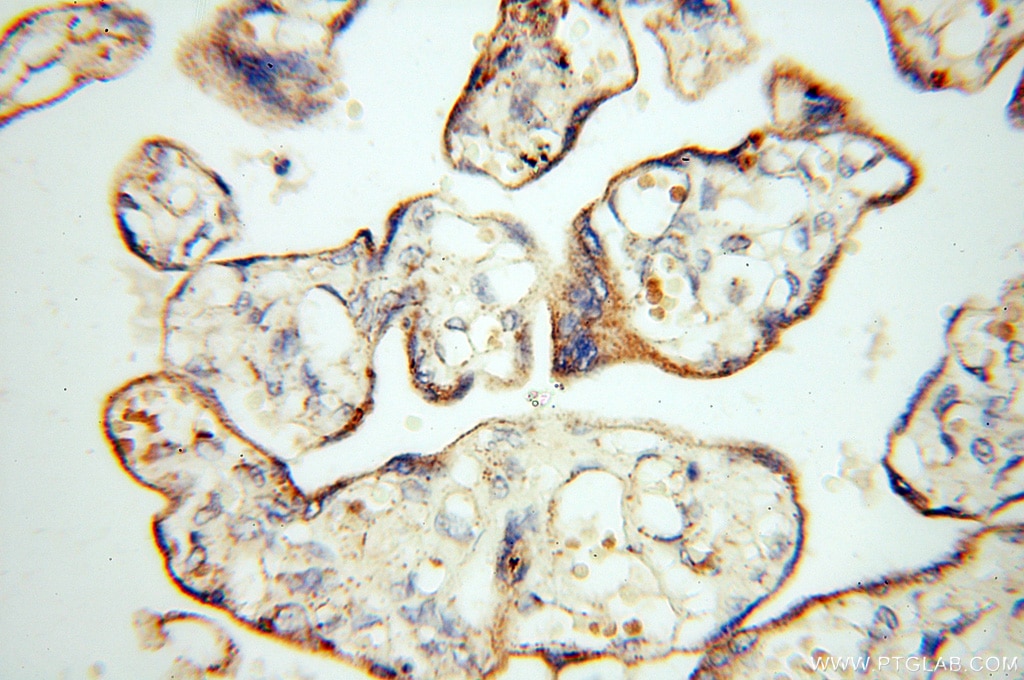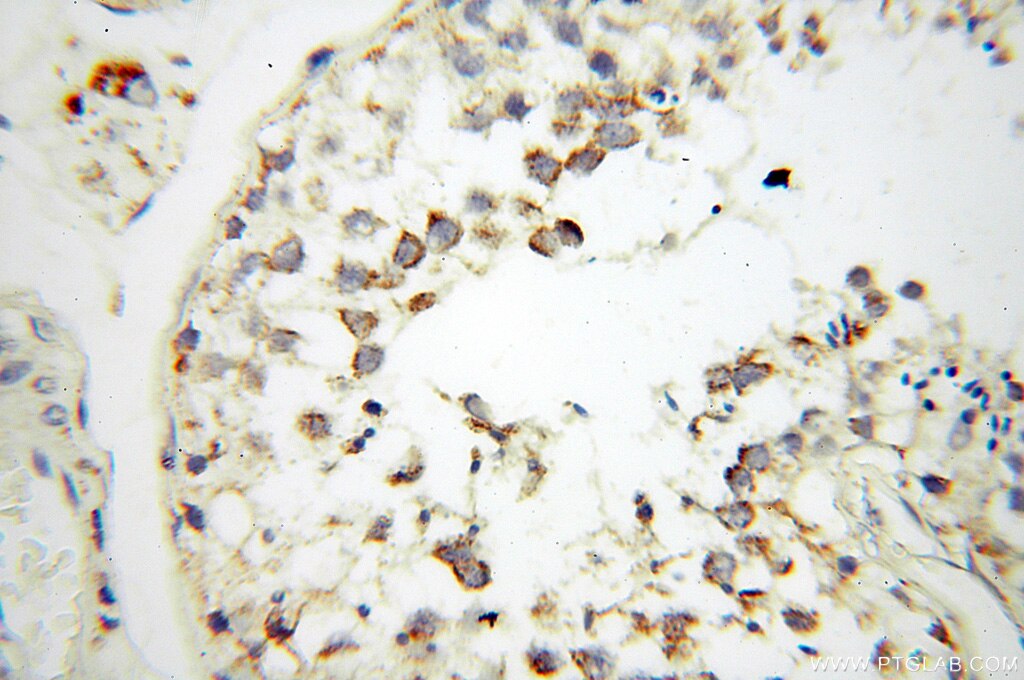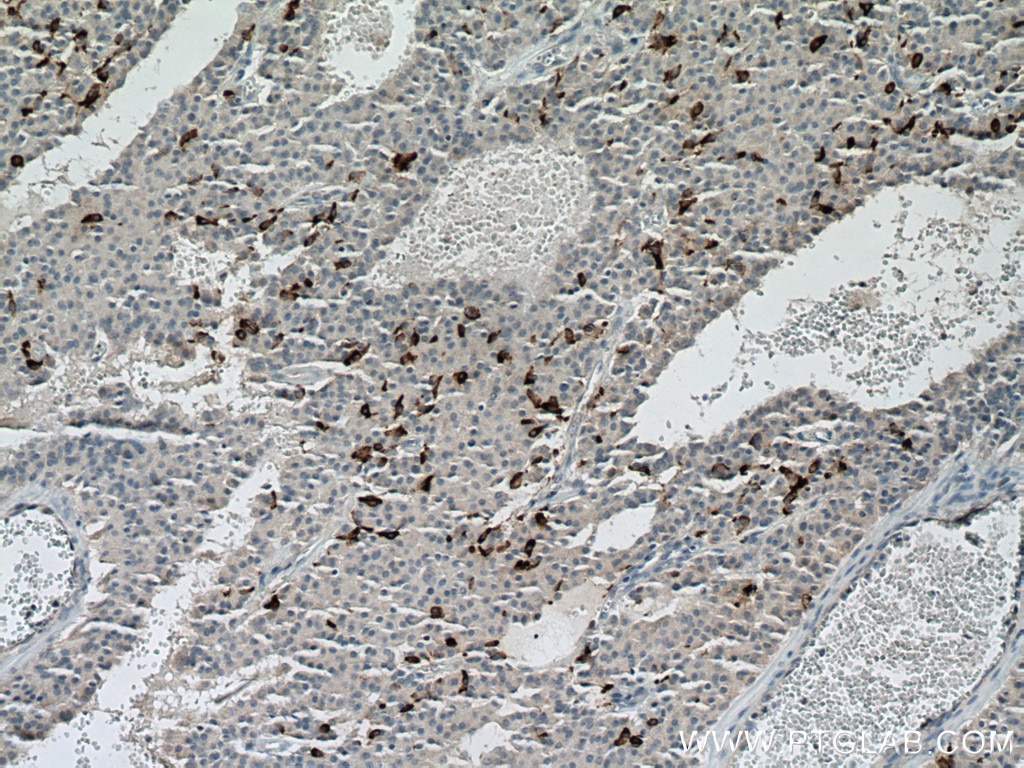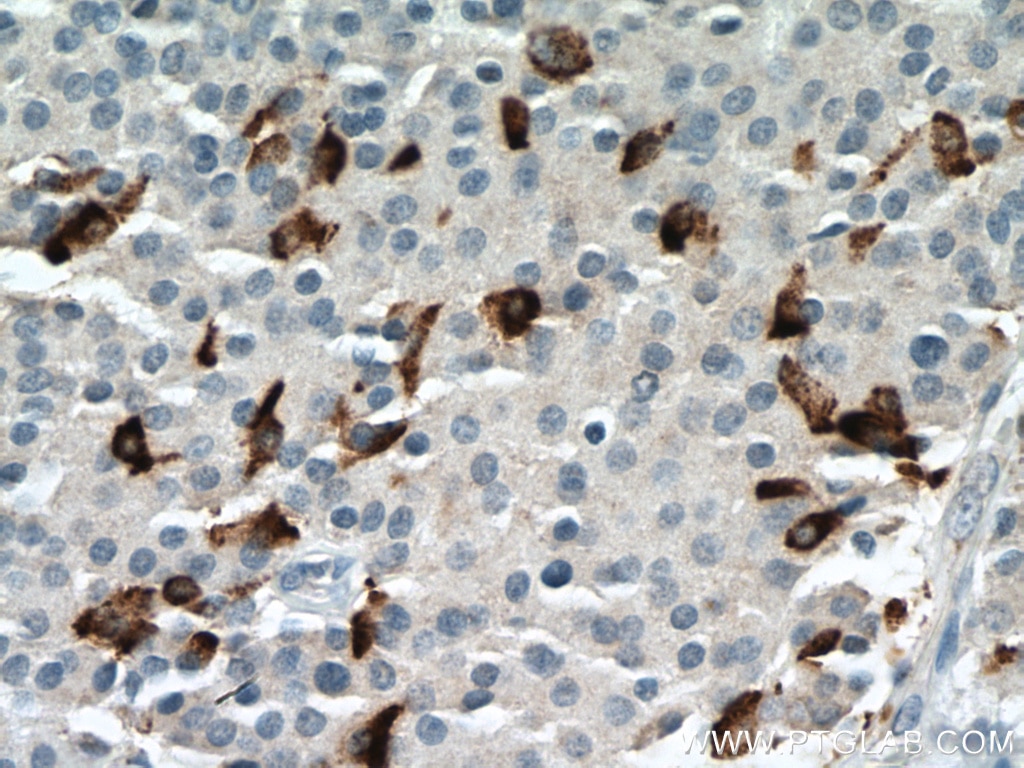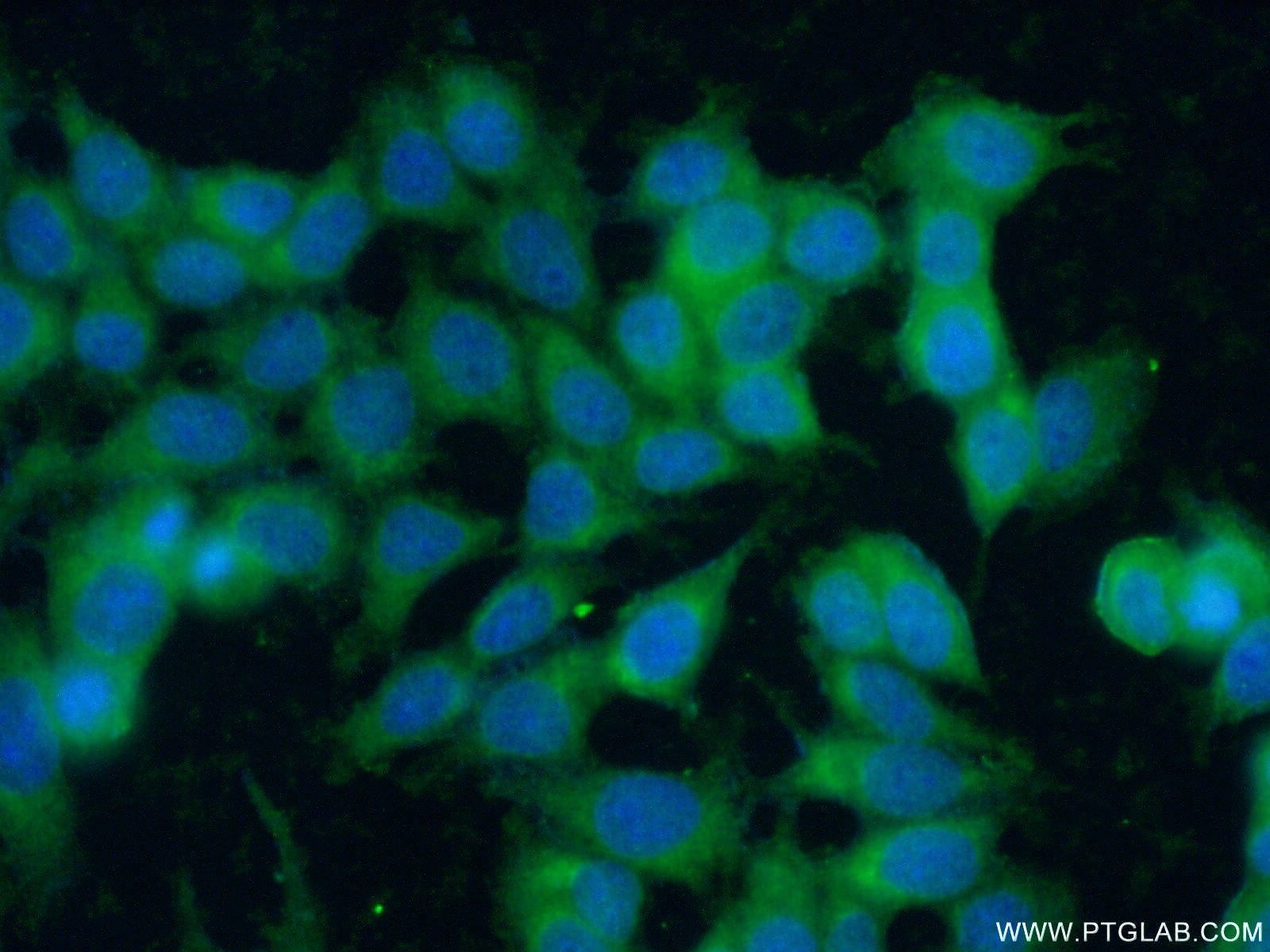Tested Applications
| Positive WB detected in | Mo7e cells |
| Positive IHC detected in | stromal tumor tissue, human placenta tissue, human testis tissue, Insulinoma tissue Note: suggested antigen retrieval with TE buffer pH 9.0; (*) Alternatively, antigen retrieval may be performed with citrate buffer pH 6.0 |
| Positive IF/ICC detected in | MCF-7 cells |
Recommended dilution
| Application | Dilution |
|---|---|
| Western Blot (WB) | WB : 1:1000-1:4000 |
| Immunohistochemistry (IHC) | IHC : 1:50-1:500 |
| Immunofluorescence (IF)/ICC | IF/ICC : 1:50-1:500 |
| It is recommended that this reagent should be titrated in each testing system to obtain optimal results. | |
| Sample-dependent, Check data in validation data gallery. | |
Published Applications
| KD/KO | See 2 publications below |
| WB | See 14 publications below |
| IHC | See 14 publications below |
| IF | See 11 publications below |
Product Information
18696-1-AP targets CD117/c-Kit in WB, IHC, IF/ICC, ELISA applications and shows reactivity with human samples.
| Tested Reactivity | human |
| Cited Reactivity | human, mouse, rat, sheep, goat |
| Host / Isotype | Rabbit / IgG |
| Class | Polyclonal |
| Type | Antibody |
| Immunogen |
Peptide Predict reactive species |
| Full Name | v-kit Hardy-Zuckerman 4 feline sarcoma viral oncogene homolog |
| Calculated Molecular Weight | 110 kDa |
| Observed Molecular Weight | 140-160 kDa |
| GenBank Accession Number | BC071593 |
| Gene Symbol | CD117 |
| Gene ID (NCBI) | 3815 |
| RRID | AB_2249558 |
| Conjugate | Unconjugated |
| Form | Liquid |
| Purification Method | Antigen affinity purification |
| UNIPROT ID | P10721 |
| Storage Buffer | PBS with 0.02% sodium azide and 50% glycerol, pH 7.3. |
| Storage Conditions | Store at -20°C. Stable for one year after shipment. Aliquoting is unnecessary for -20oC storage. 20ul sizes contain 0.1% BSA. |
Background Information
CD117, also known as c-Kit and SCFR, is a transmembrane protein with tyrosine kinase activity encoded by the oncogene c-kit (PMID: 2448137). It is a member of the type III receptor tyrosine kinase family, which also includes CSF-1R, PDGFRβ, PDGFRα, and FLT3 (PMID: 29518044). CD117 is expressed on hematopoietic stem cells and progenitor cells, mast cells, and is also found in a wide range of non-haemopoietic cell types (including melanocytes, germ cells, astrocytes, renal tubules, breast glandular epithelial cells, sweat glands, and interstitial cells of Cajal) (PMID: 10582338; 23073628). CD117 plays an important role in early hemopoiesis. It is also involved in pigmentation, fertility, gut movement, and some aspects of the nervous system (PMID: 23073628).
Protocols
| Product Specific Protocols | |
|---|---|
| IF protocol for CD117/c-Kit antibody 18696-1-AP | Download protocol |
| IHC protocol for CD117/c-Kit antibody 18696-1-AP | Download protocol |
| WB protocol for CD117/c-Kit antibody 18696-1-AP | Download protocol |
| Standard Protocols | |
|---|---|
| Click here to view our Standard Protocols |
Publications
| Species | Application | Title |
|---|---|---|
Adv Healthc Mater ROS-Responsive Hydrogel Delivering METRNL Enhances Bone Regeneration via Dual Stem Cell Homing and Vasculogenesis Activation | ||
Mech Ageing Dev Acceleration of melanocyte senescence by the proinflammatory cytokines IFNγ and TNFα impairs the repigmentation response of vitiligo patients to narrowband ultraviolet B (NBUVB) phototherapy | ||
Front Cell Dev Biol Single-Cell Sequencing Unveils the Heterogeneity of Nonimmune Cells in Chronic Apical Periodontitis. | ||
Front Immunol Immune Infiltrating Cells-Derived Risk Signature Based on Large-scale Analysis Defines Immune Landscape and Predicts Immunotherapy Responses in Glioma Tumor Microenvironment. | ||
J Exp Clin Cancer Res Growth differentiation factor 15 contributes to marrow adipocyte remodeling in response to the growth of leukemic cells. | ||
Andrology Exposure to elevated temperature affects the expression of piwi-interacting RNAs and associated transcripts in mouse testes |
Reviews
The reviews below have been submitted by verified Proteintech customers who received an incentive for providing their feedback.
FH Reyes (Verified Customer) (02-14-2025) | Interestingly, CD117 (in green), marker of stem cells, seem to have marked some of the neurons (in red) of my epileptic TSC FFPE human cortex tissue.
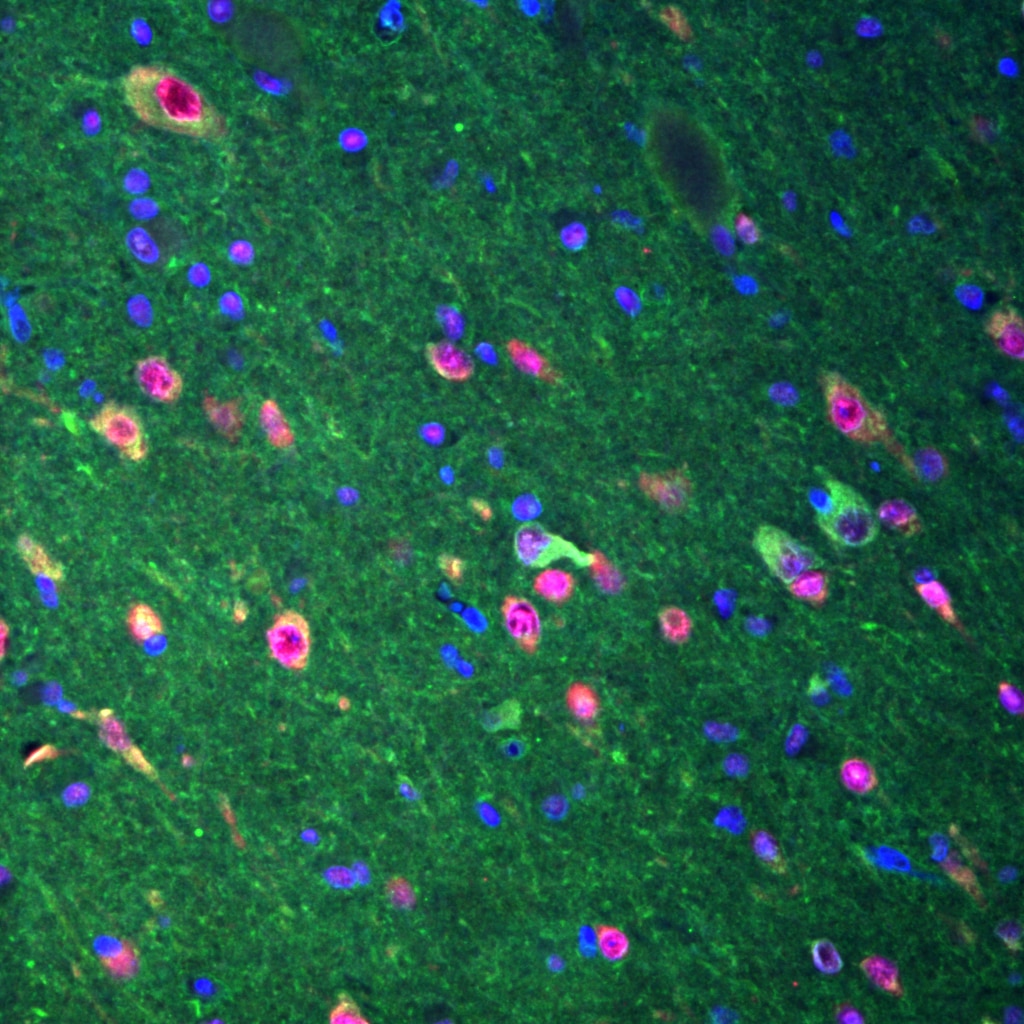 |

